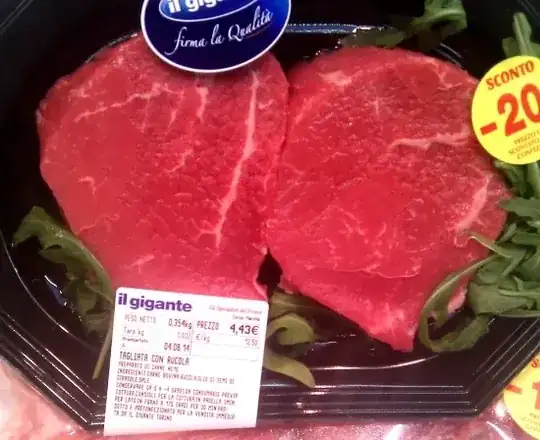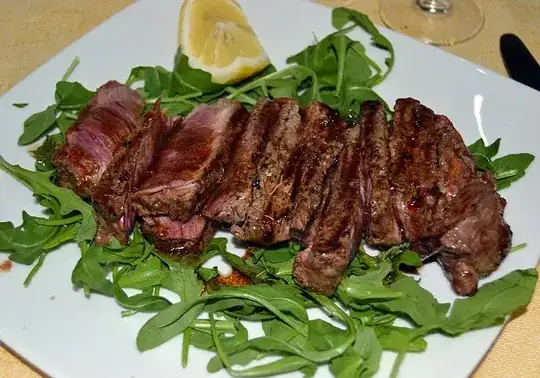Sometimes I see in supermarkets (in Italy) packages in which rocket salad is sold together with raw beef, like in this picture:
This is clearly meant to be prepared in the form of tagliata con rucola, an Italian dish made with beefsteak cut in stripes and rocket:
As you can see, the salad is normally served raw with tagliata. The supermarkets seem OK with that, but this practice triggers my food safety alert: is it safe to consume salad that has been in contact with raw meat? Should I worry about eating it?
EDIT: further information:
- these packages are found in the refrigerator aisle.
- the bottom label says (among other things) "store at 0--4 degrees Celsius [32-39 Fahrenheit] -- cook before eating". It is not clear from the wording if this warning applies to the salad as well.
- the label in the top right says "20% discount -- the marked price already includes discount". It doesn't specify if it is discounted for quick sale or for other reasons. In any case, I have also seen regular packages without the discount tag, and with the current day marked as packaging date.
- It is not customary here to put salad or other edible items as decoration -- I have never seen this done with other fresh food on sale.
- upon request, full translation of the white sticker. The notes in brackets are mine.
Il gigante [supermarket name] - the fresh food specialists. Corso Marche [address of the supermarket]
Net Wt 0.354 kg price 4.43 EUR
tare 0.032 EUR/Kg 12.50
prepackaged on: 04 August 2014
Tagliata con rucola [name of the dish, see picture above]
Meat preparation NC16 [not 100% sure about the code, it's blurry. No idea what it means, I assume it's some bureaucratic category for the meat]
Ingredients: bovine meat, rucola, sunflower oil, salt
Store at 0-4 degrees [32-39F]. To be consumed after cooking. Cooking suggestions: in pan, 3 minutes each side. In oven 175 degrees [350F] for 30 minutes. Produced and prepackaged for immediate sale by "Il gigante", Turin.
- Note that I did not take this picture myself; this one comes from the internet. I can take a similar one the next time I visit my local supermarket, but it's probably going to be 7-10 days from now.

